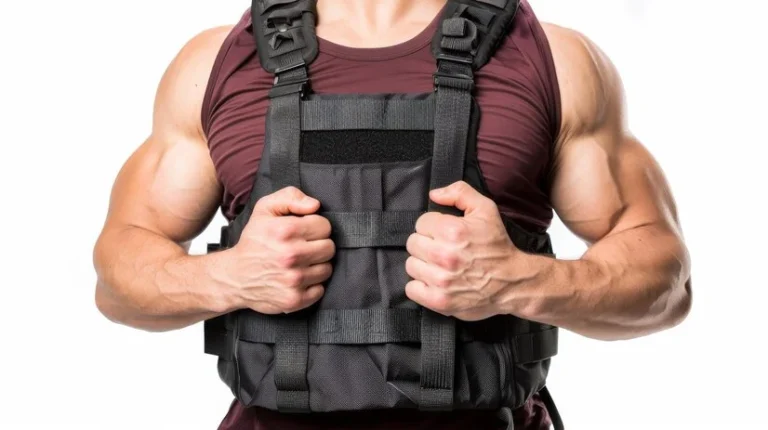Weighted vests have become increasingly popular among fitness enthusiasts, athletes, and even those looking to enhance their everyday workouts. If you’ve ever wondered what a weighted vest is, how it can benefit you, and why it’s gaining so much traction in the fitness world, this article will break down everything you need to know. From improved muscle strength to enhancing cardio routines, weighted vests offer a versatile addition to your training that can take your fitness to the next level.
What is a Weighted Vest?
A weighted vest is a simple yet highly effective piece of fitness equipment that you wear on your torso, containing pockets where you can add or remove weights. These weights are typically made of iron, sand, or steel and come in varying amounts. Depending on your fitness level and the type of workout, you can adjust the load accordingly. Wearing a weighted vest adds resistance to your movements, which helps increase the intensity of your exercises.
The Benefits of Using a Weighted Vest
Enhanced Muscle Strength
By adding extra weight to your body during exercises like squats, lunges, or push-ups, a weighted vest forces your muscles to work harder. This, in turn, leads to greater muscle strength over time. Whether you’re focusing on your upper body, lower body, or core, the additional resistance engages more muscle fibers, making your workouts more effective.
Improved Cardiovascular Endurance
Running or walking with a weighted vest increases the demand on your cardiovascular system, making your heart and lungs work harder. This is an excellent way to boost endurance without having to extend the duration of your workout. Over time, you’ll notice improved stamina, which can benefit not only your fitness routines but also your everyday activities.
Boosted Calorie Burn
When you increase the resistance in your workouts, your body naturally burns more calories. A weighted vest adds intensity to even basic exercises, turning activities like walking or bodyweight exercises into fat-burning workouts. For those looking to shed extra pounds, incorporating a weighted vest can significantly accelerate weight loss efforts.
Increased Bone Density
Weight-bearing exercises, particularly those that involve resistance, are known to promote bone density. Wearing a weighted vest while doing exercises like squats, lunges, or even walking can help strengthen your bones, reducing the risk of osteoporosis as you age.
Better Posture and Balance
Using a weighted vest can improve your posture and balance by engaging the core muscles more effectively. With the added resistance, your body must work harder to maintain stability during movements. Over time, this can help enhance your overall posture and coordination.
Workouts You Can Do With a Weighted Vest
Running or Walking
One of the simplest yet most effective ways to use a weighted vest is by incorporating it into your walking or running routine. The added weight increases resistance, making your muscles and cardiovascular system work harder. Start with shorter distances and lighter weights before gradually increasing the load.
Push-ups
Adding a weighted vest to your push-up routine can intensify the exercise by forcing your chest, arms, and core to work harder. Start with a manageable weight and ensure your form is correct before increasing the resistance.
Squats and Lunges
Squats and lunges are excellent exercises for building lower body strength. Wearing a weighted vest adds resistance, helping you to target the glutes, quads, and hamstrings more effectively. Incorporating the vest into your leg day routine can help enhance results.
Pull-ups
For those who are already comfortable doing pull-ups, adding a weighted vest can take this upper-body exercise to the next level. The additional weight challenges your back, shoulders, and arms, making the movement more difficult and rewarding in terms of muscle gain.
HIIT Workouts
High-intensity interval Training (HIIT) involves short bursts of intense exercise followed by brief rest periods. It can increase the intensity of exercises like burpees, jump squats, and mountain climbers, making your HIIT workouts even more effective for burning fat and building strength.
How to Choose the Right Weighted Vest

Adjustable vs. Fixed Weight Vests
When shopping for a weighted vest, one of the first decisions you’ll need to make is whether to choose an adjustable or fixed-weight vest. Adjustable vests allow you to change the weight by adding or removing small weight packs, making them versatile for different workout types. Fixed-weight vests, on the other hand, offer a set amount of resistance and are generally more streamlined and less bulky.
Weight Capacity
Consider the weight capacity of the vest. Beginners may want to start with a lighter vest (5-10 kg) and gradually increase the load as their strength improves. More advanced users might opt for vests that can hold up to 30 kg or more, depending on their fitness goals.
Material and Comfort
Since you’ll be wearing the vest during workouts, comfort is essential. Look for vests made from breathable, durable materials that wick away sweat. The vest should also have adjustable straps to ensure a snug fit. A poorly fitting vest can shift during exercise, causing discomfort and even injury.
Purpose of Use
Are you using the vest for strength training, cardio, or a combination of both? Some vests are designed with specific types of workouts in mind. For example, vests for running tend to be lighter and more form-fitting, while those for strength training may allow for greater weight capacity and sturdiness.
How to Safely Use a Weighted Vest
Start Slowly
If you’re new to using a weighted vest, it’s crucial to start with a lighter load and gradually build up. Jumping straight into a heavy vest can lead to injury or strain, particularly on your joints and spine. Start with 5-10% of your body weight and increase as you become more comfortable.
Watch Your Form
Always focus on maintaining proper form when using a weighted vest. The added resistance can make it easier to lose form, which can result in injury. Keep your core engaged, and back straight, and avoid leaning forward to counterbalance the weight.
Avoid Wearing It for Too Long
While weighted vests can enhance your workouts, wearing them for extended periods or during non-exercise activities can lead to overuse injuries. It’s best to use the vest during specific exercises and remove it afterward to avoid placing unnecessary stress on your joints.
Common Mistakes to Avoid When Using a Weighted Vest
Choosing Too Heavy a Vest Too Soon
Many people make the mistake of going for a heavier vest right away, thinking it will bring faster results. However, this can lead to improper form and increase the risk of injury. Start with a manageable weight and only increase when you feel confident in your movements.
Using the Vest for Every Workout
While a weighted vest can enhance many workouts, it’s not necessary or advisable to use it for every exercise. Overuse can lead to joint strain, so be sure to incorporate rest days and use the vest selectively in your routine.
Ignoring the Importance of Core Stability
When using a weighted vest, your core has to work harder to maintain balance and posture. Neglecting core stability during movements can increase the risk of injury. Always engage your core muscles when wearing the vest, particularly during exercises like squats, lunges, and push-ups.
Conclusion
Incorporating a weighted vest into your workout routine can significantly enhance your strength, endurance, and overall fitness. Whether you’re a beginner or an advanced athlete, the versatility and effectiveness of a weighted vest make it a valuable tool for anyone looking to take their training to the next level. Remember to start slowly, focus on maintaining good form, and choose the right vest based on your specific needs. With the right approach, a weighted vest can help you achieve your fitness goals faster and more efficiently.
Ready to elevate your workouts? Give the weighted vest a try and experience the difference for yourself.
